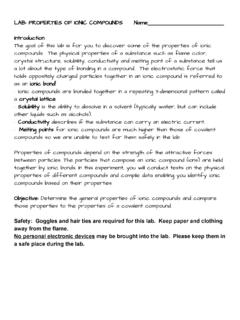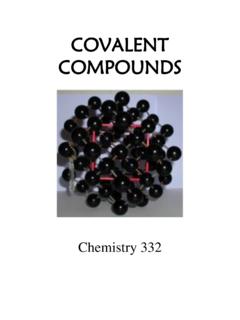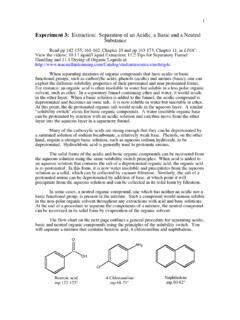Lab Properties Of Ionic Compounds Name
Found 6 free book(s)LAB: PROPERTIES OF IONIC COMPOUNDS Name
angelakeelsci.weebly.com· Melting points for ionic compounds are much higher than those of covalent compounds so we are unable to test for them safely in the lab. Properties of compounds depend on the strength of the attractive forces between particles. The particles that compose an ionic compound (ions) are held together by ionic bonds.
COVALENT
chemunlimited.comUnit 4 (Covalent Compounds) 1. Write the electron dot structure (Lewis Dot Structure) for covalent compounds or ions. 2. Use electronegativity to determine the polarity of a bond or molecule. 3. Given the formula of a covalent compound, write its correct name; given the name of a covalent compound, write its formula. 4.
SAFETY DATA SHEET: NONYL PHENOL 9
www.ciscochem.comMay 15, 2015 · Ionicity (in water) Non-ionic Dispersion Properties See solubility in water Solubility Soluble in cold water, hot water 10. STABILITY AND REACTIVITY Stability The product is stable Instability Temperature Not available Conditions of Instability Avoid prolonged excess heat which may cause product decomposition.
Experiment 3: Extraction: Separation of an Acidic, a Basic ...
www.bc.eduWhen separating mixtures of organic compounds that have acidic or basic functional groups, such as carboxylic acids, phenols (acidic) and amines (basic), one can exploit the different solubility properties of their protonated and non-protonated forms. For instance, an organic acid is often insoluble in water but soluble in a less polar organic
Chemistry 1st Semester Practice Exam
mrsfrancischemistry.weebly.comB. compounds C. homogeneous mixture D. elements E. solutions 6. An element cannot _____. A. be part of a heterogeneous mixture B. be part of a homogeneous mixture C. be separated into other substances by chemical means D. interact with other elements to form compounds E. be a pure substance 7. In the following list, only _____ is not an
ACIDS, BASES AND SALTS - NUST
www.nust.naINTRODUCTION Acids, bases and salts are 3 distinctive classes of chemical compounds Important part of chemistry All substances are acidic, neutral or basic (alkaline) 3 groups of compounds are found everywhere Foods, medicines, cleaning products





